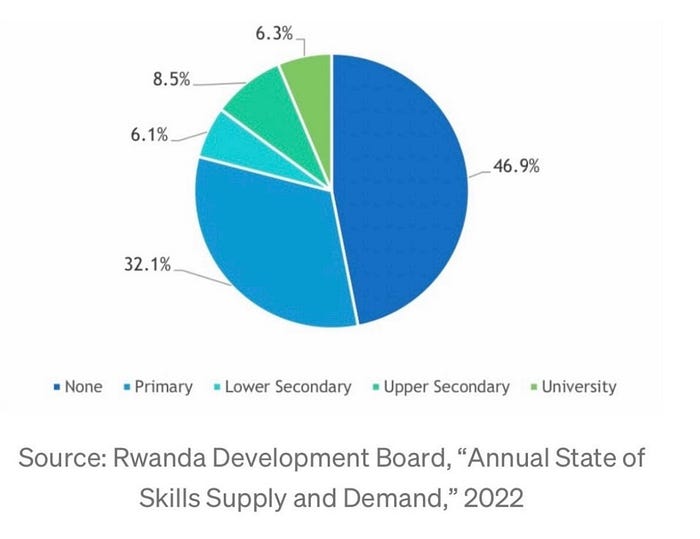Letter from Rwanda
Dear DH, we are keen to hear your interpretation of His Excellency President Paul Kagame’s latest cabinet reshuffle. As you may be aware, HE dropped and reappointed ministers in several ministries. Among them is Ministry of Education (MINEDUC). How do we explain the relentless upheavals in MINEDUC? Kindly share your thoughts on the matter.

Response to my Kigali friends
General Paul Kagame cited the need for creating space for the younger generation when he announced his latest cabinet reshuffle. As he put it, the younger generation must play leadership roles because “that is what gives us hope for the future.” There are two main takeaways from the General’s latest cabinet reshuffle: 1) the madhouse known as the (mis)education ministry; 2) the Imbuto Foundation is fully embedded in the government of Rwanda.
The madhouse of the (mis)Ministry of Education
General Kagame’s cabinet ministers rarely last long in their posts. The most hazardous portfolio is by far the madhouse called the (mis)Ministry of Education. The survival rate is very low – 6 education ministers lasted only 1 year or less, including the following: Joseph Nsengimana (1994–1995); Pierre Celestin Rwigema (1995); Laurien Ngirabanzi (1996); Daphrose Gahakwa (2008-2009); Pierre Damien Habumuremyi (2011); and Silas Lwakabamba (2014–2015). The rest were removed after 3 years except for one minister – Romain Murenzi survived 5 years from 2001 to 2006.
Meanwhile, Kagame was also causing havoc with education policies. Overnight he switched the teaching language from French to English in 2009. The Rwandan strongman then turned to Uganda and Kenya to recruit teachers to train and mentor to Rwandan teachers. Soon running out of money and interest, Kagame abandoned the project. The United Nations Children’s Fund (UNICEF) describes education in Rwanda in these words:
“Classrooms are often too crowded, with an average of 62 students for every qualified teacher…Primary students score too low in numeracy and literacy exams. Teachers are also unable to teach in English.”
Higher education is in the same mess. For example, the University of Rwanda is ranked the 83rd in Africa and stands at the miserable ranking of 2,592 globally.
Fast-forward to 2022 – Kagame’s teacher imports from Zimbabwe landed in Rwanda to perform the miracle of fixing Rwanda’s failed education sector. But with such leadership turmoil, how can MINEDUC deliver education to millions of Rwandan learners currently struggling for knowledge for a better future? According to the MINEDUC data, the total learner population in Rwanda is 3,615,567 comprising four categories: 282,428 in pre-primary schools; 2,512,465 in primary schools; 648,947 students in secondary schools; 85,587 TVET trainees; and 86,140 students in higher education.
The structure of the Rwandan workforce by education level shows the extent of (mis)education in Kagame’s Rwanda.

The workforce with no education is 46.9 percent versus 32.1 percent who completed primary; 6.1 percent lower secondary; 8.5 percent upper secondary and 6.4 percent higher education. In other words, the combined workforce with no education, primary school, and secondary school education stands at 93.6 percent. Meanwhile, according to the Rwandan Development Board’s 2022 Rwanda Annual State of Skills, Supply and Demand, Rwanda’s private sector remains microscopic. “Over 90% of all businesses are nascent, informal, and concentrated in the non-tradable sectors.”
The powerful role of the Imbuto Foundation in governmental institutions
It is now an open secret that the Imbuto Foundation is embedded in Rwanda’s governmental institutions. Sandrine Umutoni, who was the Director General of the Imbuto Foundation, is the newly minted Minister of State for Youth. She follows in the footsteps of Uruieni Feza Bakuramutsa who was transplanted from the Imbuto Foundation to General Kagame’s office as director of cabinet. Bakuramutsa replaced Ines Mpambara who was the longest-serving director of cabinet for 11 years. Mpambara had previously deputized the founder and chairwoman of the Imbuto Foundation. Mpambara currently serves as the minister in charge of cabinet affairs.
Umutoni, Bakuramutsa and Mpambara share one major feature – the trio were transplanted from the Imbuto Foundation. And who is the founder and chairwoman of this organization deeply embedded in the Rwandan government? This is no less than Madam Jeannette Nyiramongi Kagame. Don’t forget that her daughter Ange Kagame is second in command of the Strategy and Policy Council in her father’s office; her son Ivan Cyomoro Kagame sits on the board of directors of Rwanda Development Board.
The bottom line: doesn’t the Rwandan strongman understand the importance of education?
Education is the process where citizens acquire or impart basic knowledge to others. From education, citizens develop skills essential to day-to-day living and develop judgment and reasoning. Crucially, education equips youthful citizens to navigate life and contribute to society as they grow older. Therefore, it is a no-brainer to say that individuals who attain a higher level of education are more employable thereby contributing to family and national prosperity.
How does General Paul Kagame account for Rwanda’s education mess under his nearly 30 year rule? That’s it – he is not accountable to anyone and runs the Rwandan state with an iron-fist, using intimidation as a defense against his own failings and insecurities. Imagine being the education minister in Kagame’s government. The General who is the appointing authority will not support you – on the contrary, he will undermine you to reinforce his own powerful position. A Rwandan minister’s morale immediately nosedives under his autocratic rule. And after a year or two, you will be dismissed for failure to deliver policies which you were not allowed to craft or implement.
Stay tuned.




























































